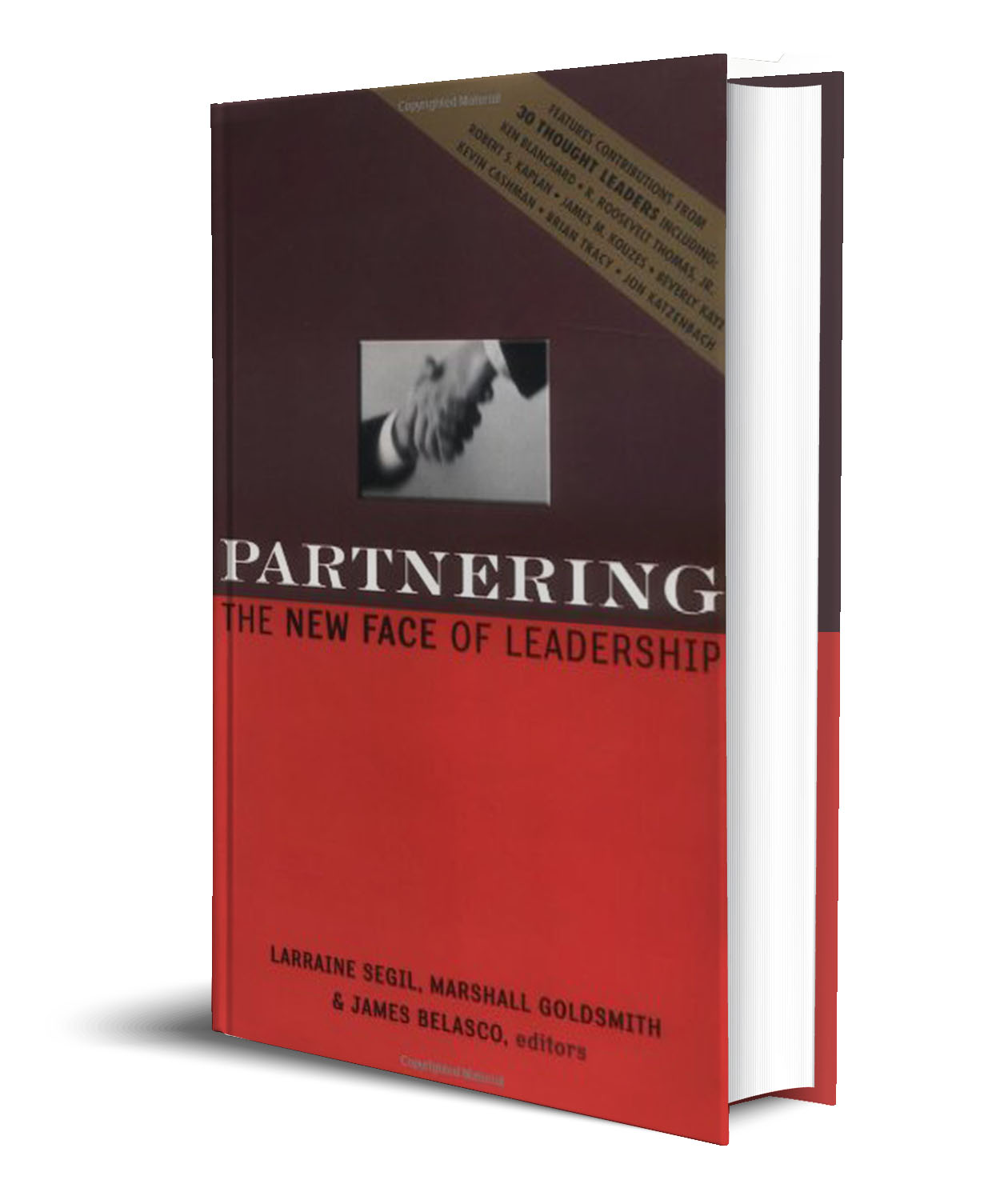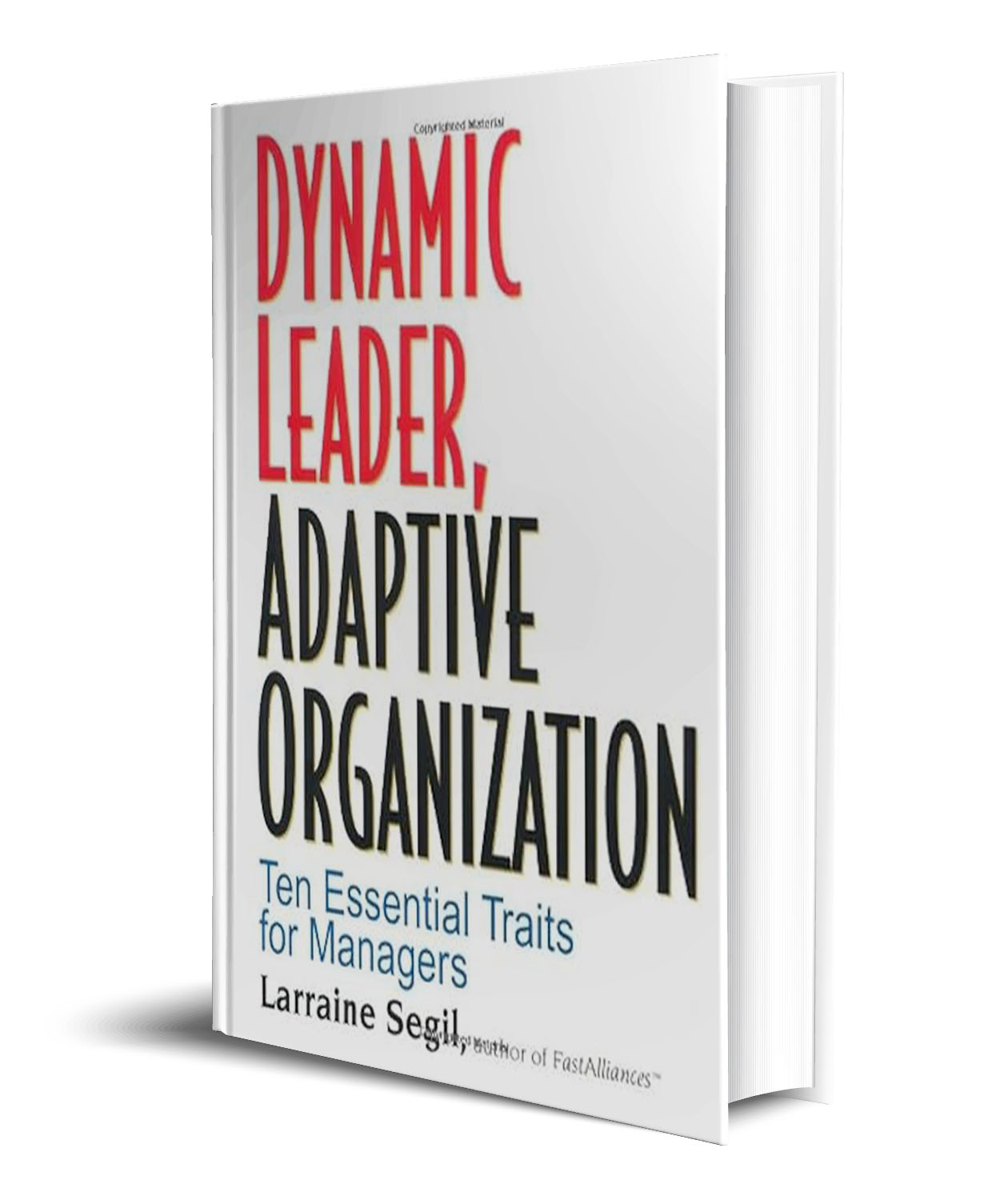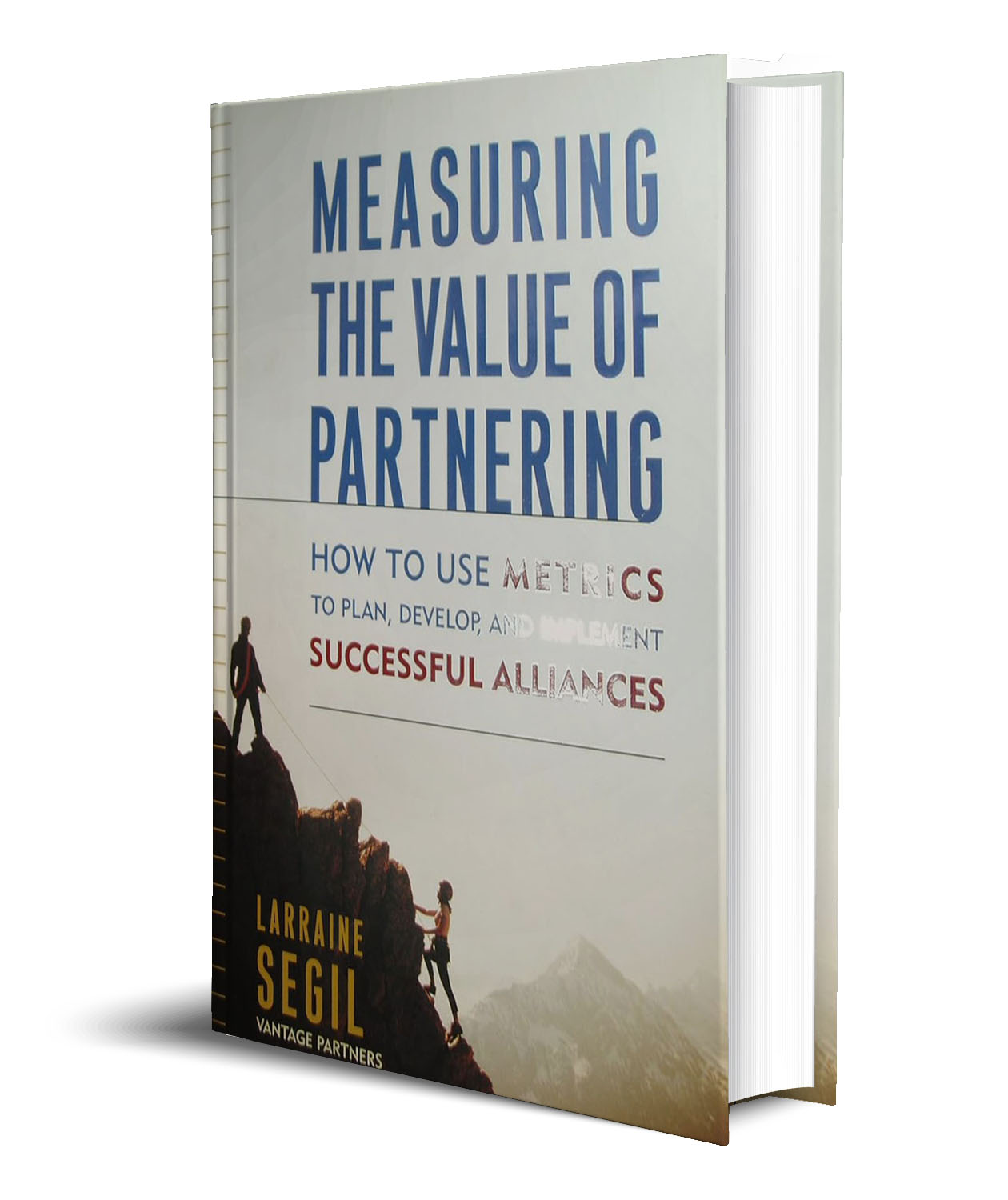Creating Alliances That Work
May 1997
CEO Refresher
Why do fifty-five percent of alliances fall apart three years after conception? How can the potential for alliance success be increased?
To answer these questions you must first explore the reasons that an alliance might fail:
* Incompatibility of corporate culture or personality;
* Clash of managerial personality;
* Differing project personalities – the project is of varying levels of priority to each alliance partner.
Research into over 200 companies has shown that 75% of companies surveyed felt that alliance failure was caused by incompatibility of corporate culture or personality; 63% reported that the failure was a result of incompatible managerial personalities; 58% attributed failure to project personality or priority differentials.
Through my research, I have also found that the business justification — business reasons, value proposition, strategic business fit – for an alliance is inversely proportional to compatibility of corporate and managerial personality. In other words, as the business justification decreases in importance over time, the cultural incompatibilities increase in importance. These considerations intersect at about the three year time frame — exactly when 55 percent of all alliances fall apart.
The Mindshift Approach
Until now, many alliance relationships have suffered because they have not had a clear and effective tool for analyzing and planning. The Mindshift Approach – a methodology that prompts you to look at critical areas and helps you anticipate the behaviors that may cause alliance communication and trust to break down — can help enhance the likelihood of alliance success. The Mindshift approach enables managers to anticipate and manage different corporate and managerial personalities by recognizing the life-cycle stages of an organization, group, division or product. The Approach is also fundamental to resolving inter-divisional warfare. Few large organizations are in one life-cycle stage — most have divisions in various stages which contributes to inter-divisional strife because of limited understanding of how the life-cycle stages of each group affect personality and behavior.
After you become familiar with the Mindshift approach, you may examine your alliance partners, both internal and external, and — as I have discovered through my research — deduce that cultural incompatibility is the real reason that you or your alliances are failing. Knowing where you and your organization are in this cycle will enable you to be more effective internally as you manage and derive strength from disparate personalities and life-cycle stages. It will also increase your chances for the creation and management of intelligent and effective external business alliances.
The process of life-cycle development is non-linear. Some organizations start and stop in one stage, never progressing further. Others double back from one life-cycle stage to another, or have differing stages in various divisions. As the company life-cycle stages change, a manager undergoes stress as he or she must adjust to new rules of behavior. A talented leader will recognize the personality differences in his or her managers as well as the demands required by the life-cycle stages of the organization and create opportunities for success regardless of these pressures.
The Mindshift evaluation should be used continually to modify expectations and change communication styles to fit different corporate and managerial personalities and to improve internal and external alliance effectiveness. The approach is a first step toward finding the answers you need to make your alliances into long-term successes.
Corporate and Managerial Personalities
The stages of the organizational life cycle are characterized by personality changes. By the same token, there are various managerial personality types, each of which fits into specific types of organizations with a varying degree of success. The key is to understand the corporate and managerial personalities so that when compatibility of alliance partners and teams is considered, strategies will be designed to take into account the different behavioral and cultural preferences in order to communicate in the language of the receiver of information and align expectations accordingly.
Stage 1: The Startup Stage – Adventurer Managers
Startup companies, where revenues and activities are just beginning, generally attract Adventurer managers. These managers are the ultimate risk-takers who combine that quality with an absolute and unshakable belief in their vision. This can often reach the level of obsession which is sometimes unrealistic. The Adventurer’s sense of urgency will compel venture capitalists to invest seed capital in his idea, and will entice others to back his hopes and fund his grand designs. While his wonderful self confidence should be recognized, attention must also be given to his lack of patience with the management process — often expressed as an unwillingness to delegate, monitor, allow for errors and correct a subordinate’s actions — and his unilateral decision-making style.
Stage 2: The Hockeystick Stage – Warrior Managers
The next stage of corporate growth is the Hockeystick stage — a period of increasing revenue which on a graph of time versus revenues looks like a Hockeystick as it rises in accelerated growth. This is when the Warrior manager is in charge. He will be a charismatic leader, directing, controlling and inspiring those who work for him, most of whom mirror his energy and commitment. He is aggressive and unrelenting in his focus. Many Warrior managers do not sustain their initial success when the company’s growth wanes and the Warrior’s directive, sometimes combative style is now seen as abrasive and begins to backfire. The Warrior is often ousted from the very company whose growth he helped to fuel unless he complements his capabilities with other managers who fit the next life cycle stage.
Stage 3: The Professional Stage – Hunter Managers
The Hunter manager fits squarely into the company as it moves through its professional stage of becoming more systematic, collaborative and proactive. Revenues are still growing but not as aggressively as in the Hockeystick stage. Often the Warrior manager is made chairman of the board or moves out of the company as the Hunter comes in and installs systems, processes and a team approach. Some Warriors grow into Hunters; others function well with their Hunter counterparts.
Stage 4: Mature and Consolidating Stage – Farmer Managers
The next corporate life-cycle stage is Mature and Consolidating where the revenue growth is slowing and the Farmer manager holds sway. He is seasoned, with the patience to sow seeds and wait for them to mature, but sometimes becomes complacent. Complacency could be a sign that he will not be risking his reputation if the decision fails. He is clearly an “Old Boy Network” member and verifies his decisions first with his internal circle before going forward.
Stage 5: The Declining Stage – Politician Managers
The Declining company is run by Politician managers. Their most regrettable quality is to take a perfectly good business opportunity and kill it through self-protective activities, delaying tactics, political game playing and fear of action. Politician managers will detail a project to death, and ultimately will destroy the company. This manager is totally risk-averse, covering his or her rear and encouraging memo writing to such a degree that paperwork is a protection against reality. While the Hunter is unlikely to want Politicians in his organization, the Farmer is far more likely to tolerate the Politician manager. After all, he is but one step away from that stage himself.
Stage 6: The Sustaining Stage – Visionary Managers
The Visionary manager inspires hope and empowerment through his results-oriented, assertive, and confident demeanor. A classic example of a Visionary manager is George Fisher of Eastman Kodak. The Visionary manager enters a Declining company with a breath of promise to transform it into a Sustaining one. The challenge is to take a company that is highly formalized, structured, and generally matrix-style, and to streamline it to become more effective and flexible. The Visionary manager has some of the characteristics of the Adventurer, such as inspiration and intense drive, but is more experienced and measured in style. The Visionary manager has generally been a professional Hunter manager for a substantial period of his or her business life and is familiar with the Politician types too — he can spot them a mile off and will isolate or terminate them in large numbers.
Where the Visionary differs greatly from the Adventurer and Warrior is in his ability to build and empower teams while still taking risks and bringing about systematic change. Adventurers are generally inconsistent in their efforts to delegate decision-making and Warriors are often impatient with team building processes. The Visionary manager is usually accompanied by a SWOT team — a small group of leaders who may have been with the Visionary in former turnarounds or helped the Visionary to succeed in past activities. They will help improve the serious morale problems that often exist in the company that the Visionary enters.
Project Personalities
Aside from corporate personality and managerial personality, there is also project personality, which is the priority each alliance partner places on a project. Levels of priority include:
“Bet the Farm” – integral to the future survival and strategic positioning of the organization, a project that will have excellent resources allocated both in time, human, and financial capital.
“Market Extending” – a middle of the road project which is important at inception but unless it becomes a “Bet the Farm” project, will see management time and attention wane.
“Experimental” – important to some within the organization and is well defined in time and resources. All other projects are less important and fall under the radar.
The classification only has impact when your project is on a different priority than your partner’s. Knowing this means that your behavior must change. If your project is “Bet the Farm” and is defined differently by your partner, you will be doing most of the work. In turn, expectations should be aligned accordingly.
Applying the Mindshift Methodology
The purpose of applying the Mindshift method is to understand how rapidly your company will respond to changes in the environment, a business downturn, or competitive forces. It also helps you get a better understanding of how the culture and relationship fit will work with your company, your managers, and the project in contrast to theirs. To gather the necessary information, look at the following areas in questions to learn more about your partner’s life-cycle stages, its corporate personality, and the Project Personality Type of the alliance.
1. Discover the stage of the life cycle that your unit, division, group, or organization is in. This is accomplished by relating revenues or units of growth to time.
2. Determine the organization’s corporate personality. Identify the personality characteristics that best fit your group, unit, division, or company. If they belong to various stages of the life cycles, try to determine which personality type accommodates most of your company’s characteristics.
3. Look at your personal managerial characteristics to see how you fit within the stages of corporate cycles of change. Again, you may find that a blend of qualities from more than one personality type best describes you. Try to identify the single managerial type most fully descriptive of you.
4. Examine the project personality characteristics. Determine the level of importance to each partner of the existing or proposed alliance.
5. Use the diagnostic tools to analyze your actual or prospective partner as you have analyzed your own company and managers.
6. Finally, develop strategies based on observed personality differences that will allow you and your partner to communicate. This may mean adjusting or creating new management structures by changing the form of the alliance to realign goals, modifying project priorities, or realistically reformulating the project’s expectations.
Corporate alliances can be improved if compatibility of corporate, managerial and project personalities are anticipated and managed. Knowing how to use the corporate life cycle stages to do this is paramount to improving alliance success, and is fundamental to resolving inter-divisional warfare. As an investor, it is critical to examine the personality fit of the alliance partners of the investment opportunity, their longevity, the managers in charge and the relativity of the project being undertaken. By doing so, you might deduce that cultural incompatibility will cause you to (1) qualify your investment, attaching to it performance milestones or (2) withhold it altogether.
The Mindshift approach is a powerful means to examine corporate compatibility and to estimate the potential of success for high risk investments.






Leave a Reply
You must be logged in to post a comment.